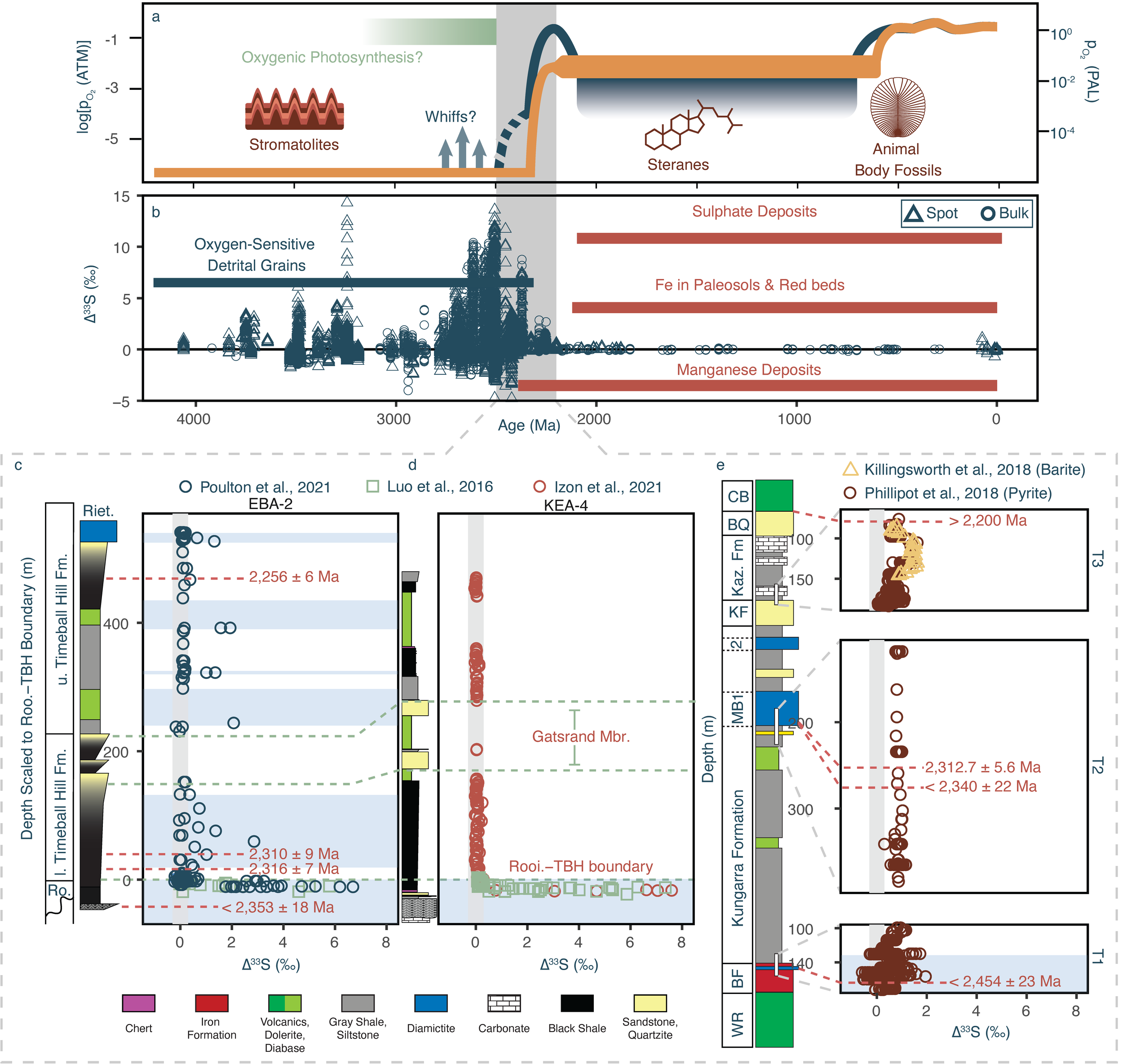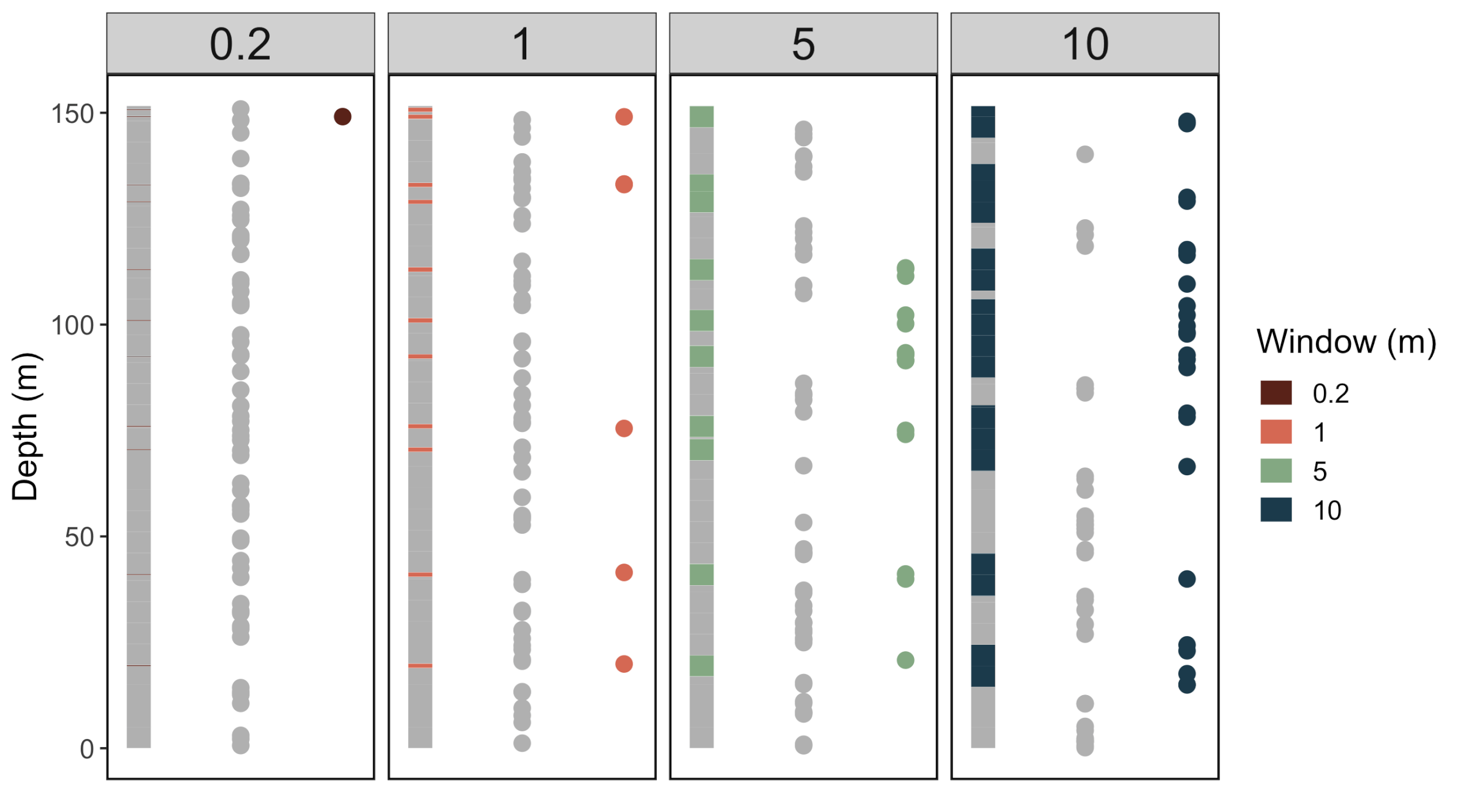The Great Oxidation Event
Almost all multicellular organisms as we know them require oxygen. Today, our atmosphere is made up of roughly 21% oxygen gas, but this has not always been the case. The Great Oxidation Event (GOE) represents one of the most profound changes to the Earth's surface in its history. The rise of oxygen surrounding this interval instigated a cascade of chemical and biological shifts that altered the foundation for how the geosphere and biosphere interact to this day, setting the stage for the evolution of complex life. Constraining the timing and nature of this transition is fundamental to our understanding of the evolution of the Earth system, and life as we know it.
Complexities in our understanding of the rise of atmospheric oxygen
The permanent disappearance of mass-independent sulfur isotope fractionation (S-MIF) from the sedimentary record has become a widely accepted proxy for the rise of atmospheric oxygenation. However, ostensibly time-equivalent sedimentary records have been used to tell vastly different stories of how the GOE played out. Even within the same marine basin, there are kilometer-scale discrepancies in S-MIF systematics that highlight significant uncertainties in our understanding of the dynamics of Earth’s oxygenation.
Bulk and Grain-Scale Minor Sulfur Isotope Data Reveal Complexities in the Dynamics of Earth’s Oxygenation – PNAS. https://doi.org/10.1073/pnas.2025606119
Reconciling discrepant minor sulfur isotope records of the Great Oxidation Event
Despite the clear and direct links between oxygen and S-MIF, constraining the exact timing and nature of atmospheric oxygenation has proven difficult. Although it is generally agreed that oxygen began to accumulate within the atmosphere between 2.5–2.3 Ga, different readings of the S-MIF record have been used to portray dramatically different oxygenation trajectories. Some workers argue for a unidirectional geologically rapid rise in oxygen, while others envisage an oscillatory trajectory whereby pO2 repeatedly crossed the threshold necessary to resume S-MIF genesis, and still others contend that the operation of a so-called crustal memory effect (CME) decouples the multiple sulfur isotope (MSI) record from coeval atmospheric chemistry. Specifically, it is argued that the late-Neoarchaean–Palaeoproterozoic MSI record is dominated by S-MIF inherited from an adulterated seawater sulfate reservoir supplied by the oxidative weathering of older crustal pyrite, rather than being a syndepositional atmospheric signal. Hence, before we can begin to reconcile the conflicting narratives of atmospheric oxygenation, the feasibility and potential magnitude of a CME must first be addressed.
Seeing Through the Crustal Memory Effect
In order to better understand the size and longevity of a Crustal Memory Effect (CME) we started by compiling a new multiple sulfur isotope database with extensive sample-specific metadata. After interrogating this database, we found that the MSI record is very biased, with a handful of locations accounting for an outsized proportion of the data. After accounting for these biases we showed that the CME is likely spatially variable, but also that it must be much smaller than previous estimates, which means we can see through the CME and still use the MSI record to trace atmospheric oxygenation.
The database we compiled is available with our paper, and can be explored using the interactive figure found at https://www.nature.com/articles/s41467-023-35820-w#Sec13 , or under the “S-MIF database app” tab. The database can also be accessed through GitHub and that version will be updated as new studies come out. https://github.com/buveges/Sulfur-MSI-Database
An Intermediate, Unstable Atmosphere in the Wake of the GOE
Having shown that the CME is not a significant impediment to interpreting the MSI record, we then set about trying to reconcile the two drastically different data sets from the Transvaal Basin (Poulton et al., 2021 vs. Izon and Lou et al., 2022). Using several statistical methods, as well as additional MSI data, we showed that the post 2.3 Ga reversions to anoxic atmospheres proposed by Poulton et al., (2022) must have been geologically rapid, on the order of 10’s of thousands of years. The scale and frequency of these oscillations implies that atmospheric oxygen concentrations after 2.3 Ga were predominantly above the threshold needed to inhibit S-MIF production/preservation, but were still fairly low and prone to collapse. This unstable atmospheric state may have lasted for upwards of 100 million years, and has significant implications for our understanding of the drivers and feedbacks associated with planetary oxygenation, and the evolution of life which needed to adapt to a new more oxidizing world.




